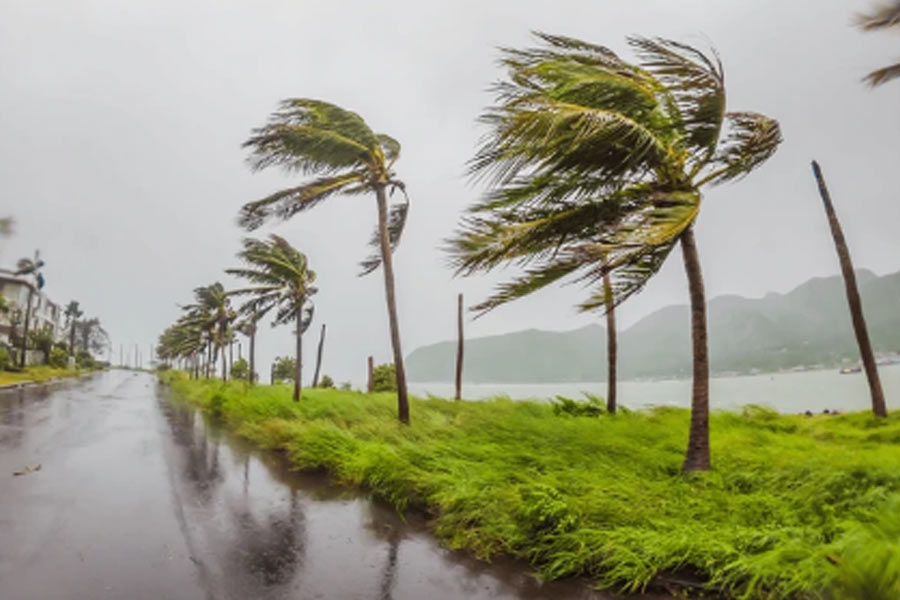Gardens in and around the city are preparing for Cyclone Dana.
After having borne the brunt of Cyclone Amphan in 2020, the authorities of gardens with huge trees and sizeable canopy covers such as the AJC Bose Indian Botanic Garden and the ones at Rabindra Sarobar, Agri-Horticultural Society of India and Tollygunge Club are taking precautions to save the trees.
The Great Banyan Tree (GBT) at the Indian Botanic Garden, which suffered a huge canopy loss during Amphan, is yet to recover from the 2020 cyclone. The garden lost over 100 trees to the storm.
The garden authorities are taking measures like supporting the GBT’s 4,000-plus prop roots with bamboo poles to maintain the centre of gravity of the tree that covers an area of over 18,000sq m.
Devendra Singh, the director of the garden in Howrah’s Shibpur, said: “Many of the trees damaged and weakened during Amphan have to be looked after with care so they can survive another tropical storm. Their weakened root system is being strengthened with soil.”
After losing trees to Amphan, the Indian Botanic Garden has gone on a plantation drive that saw planting of over 8,000 trees, of which around 2,000 are of endangeredspecies.
“The newly planted trees are now 6-10ft tall, some are 15ft tall. They are vulnerable and we have tied them to bamboo props so they survive.”
Wind tunnels have been created at the garden to ensure there is no barrier to the cyclonic winds.
“Earlier, the garden was compact and there was a lot of congestion with clusters of trees forming barriers to winds. We have cleared the garden and de-weeded it so that there are wind corridors,” said Singh.
The garden has been under scrutiny of the eastern bench of the National Green Tribunal for losing green cover.
Dipto Roy Chowdhury of the Kolkata Metropolitan Development Authority (KMDA), the custodian of Rabindra Sarabor, said a lot of periodic pruning of trees has been done to save them from being uprooted.
As a precautionary measure against Cyclone Dana, all rowing activities have been stopped at the lake from October 24 afternoon till further notice.
“We are also thinking of closing Rabindra Sarobar to visitors from tomorrow afternoon, depending on what course the cyclone takes. We are thinking of setting up a control room and installing an emergency payloader and a hydraulic crane in case trees get uprooted,” Roy Chowdhury said.
About the trees, he said: “The Sarobar has trees that are 70 to 80 years old. The trunks of these trees have dried up and are hollow.These are the most vulnerable. The shallow-rooted trees like Krishnachura or Royal Poinciana are very prone to uprooting.”
Tollygunge Club, which has on its premises around 8,000 trees that are over 6ft tall, is also preparing to counter Dana. The trees at the club belong to 170 species and include a 120-year-old banyan tree.
“We have a system in place to prevent or limit damage to trees and infrastructure. Trimming and pruning of trees and overhanging branches is a continuous process. We also anchor and provide support to weak and old trees, when required,” said Gaurav Pundir, golf superintendent of Tollygunge Club.
The Agri-Horticultural Society of India (AHSI), in Alipore, spread over 24 acres, has over 10,000 trees. The oldest tree in the garden is a century-old Elephant Foot tree.
AHSI secretary Durgadas Sarkar said: “Our garden has survived cyclones without much damage because the trees have been planted in a way that there are enough wind corridors.”











